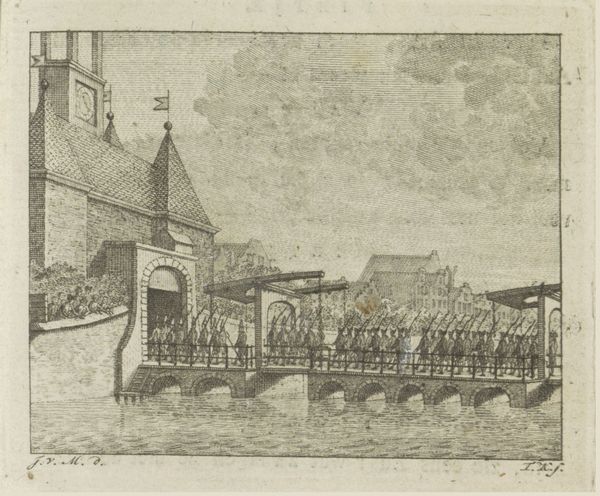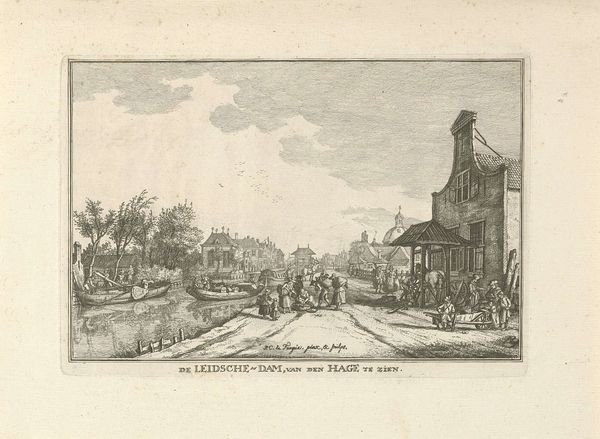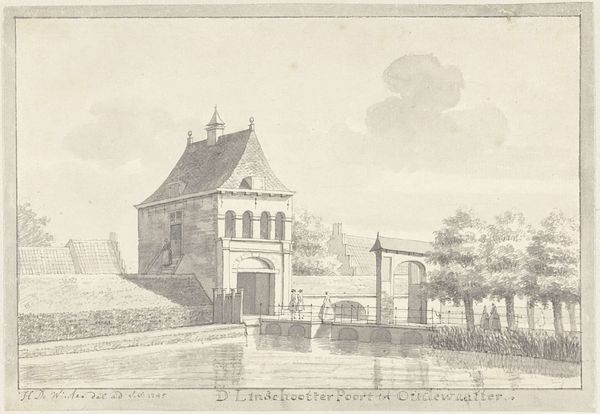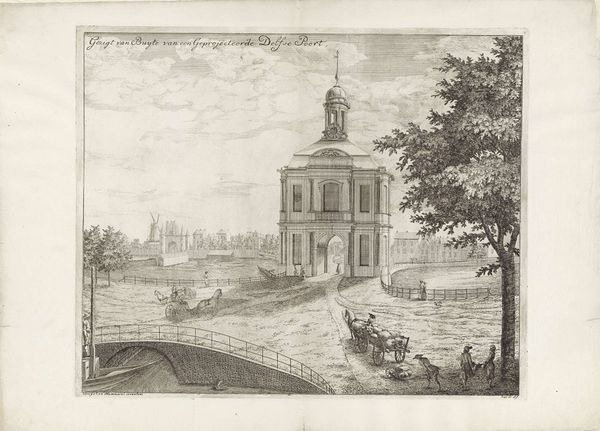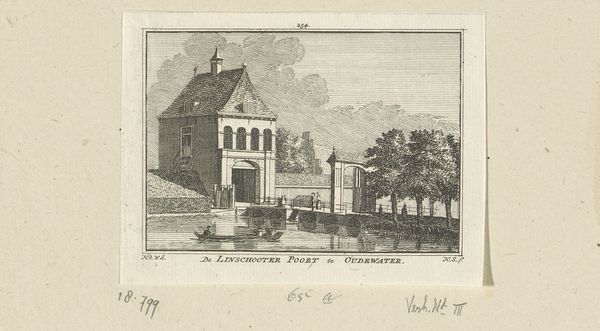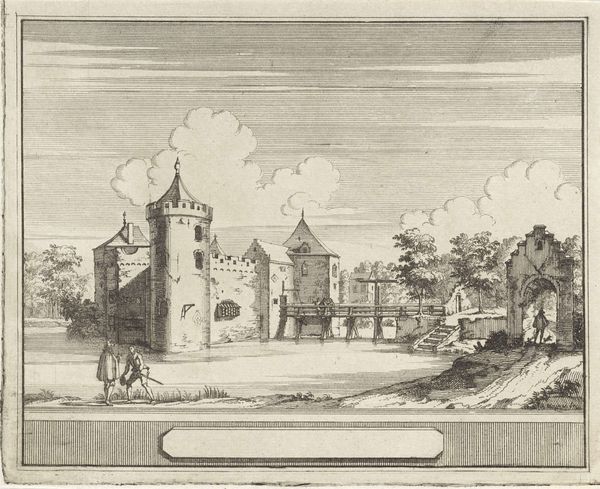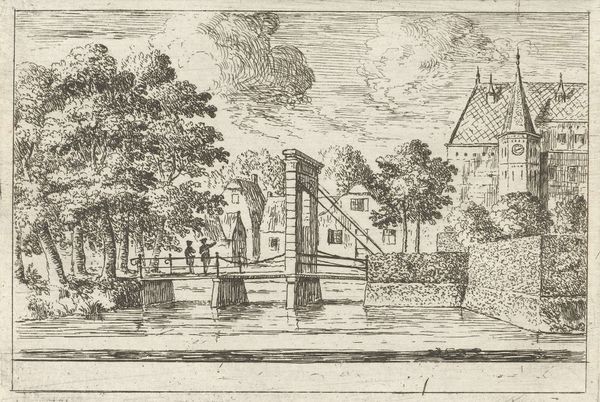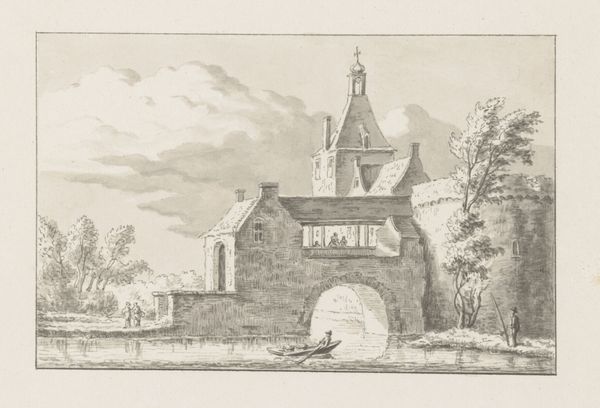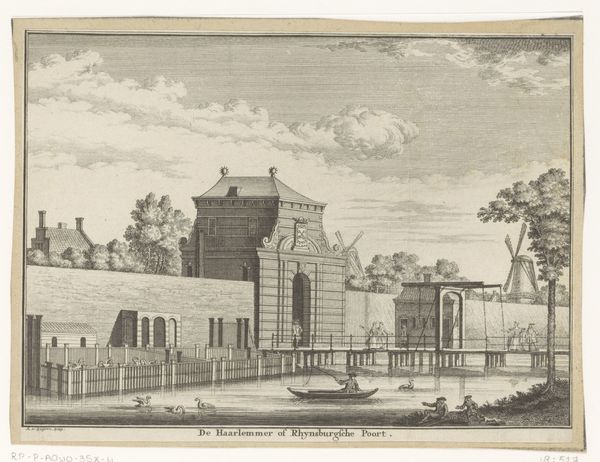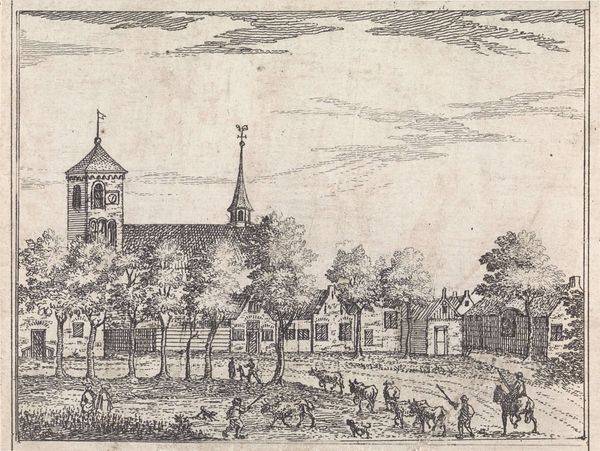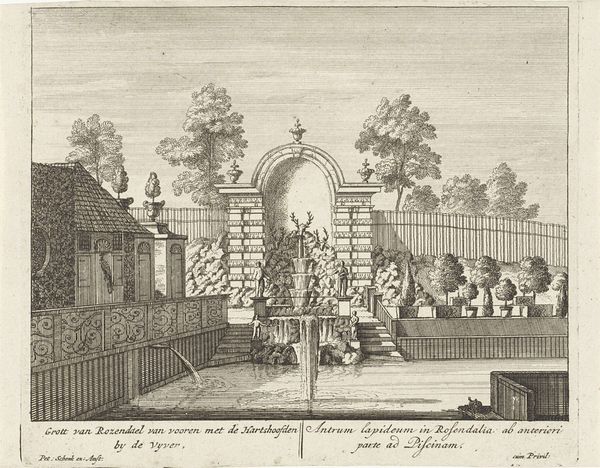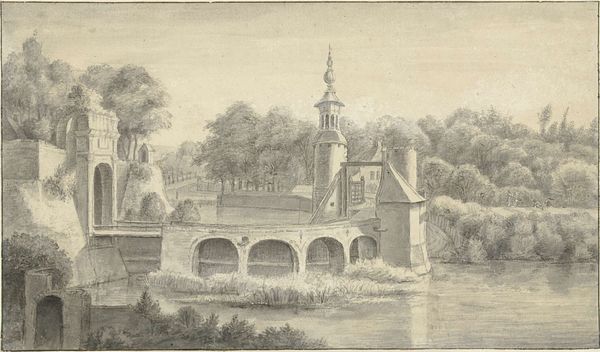
Dimensions: height 68 mm, width 80 mm, height 160 mm, width 96 mm
Copyright: Rijks Museum: Open Domain
Curator: This is "Franse leger trekt Amsterdam binnen, 1795," or "French army enters Amsterdam, 1795", an engraving from between 1795 and 1796 by Theodoor Koning. The Rijksmuseum holds this print. Editor: It's such a detailed depiction of what looks like a pivotal historical moment. I notice how the French soldiers, on horseback, seem almost staged against the backdrop of Amsterdam’s architecture. What layers are at play here, beyond just a record of an event? Curator: It’s vital to consider this image as more than just documentation. How do you read the body language of the Amsterdam citizens as compared to the rigidity of the occupying army? Editor: There’s a sense of muted resignation, I think. A few people seem to be waving, perhaps in welcome, while others appear to be simply observing. It makes me wonder about their hopes and fears at this moment of regime change. Curator: Exactly! It pushes us to explore how such a depiction participates in, or even shapes, the narrative around occupation and power dynamics. Think about the gaze – who is the intended viewer? What kind of power dynamics does this impose? Editor: That’s a powerful point. Perhaps it’s a means of normalizing the occupation for a Dutch audience, subtly implying acceptance, while simultaneously showcasing French military might to deter resistance. The control over representation becomes a key instrument of dominance, doesn't it? Curator: Precisely. What seems like a straightforward historical image opens up when we examine its cultural function within a complex web of power relations, then and now. Editor: This really makes me reconsider the role of art in constructing and perpetuating historical narratives. Thanks for opening my eyes! Curator: My pleasure, thinking about these images in their full social contexts helps us connect them to our world today.
Comments
No comments
Be the first to comment and join the conversation on the ultimate creative platform.
